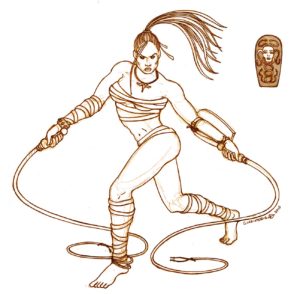Paegniaria
One of the most strange fighters on the Arena, the paegniaria goes bareheaded and tight bandages cover her body. She protects herself from strikes with a little wooden shield tied to her left forearm, and hobbles along with a wooden stick and a whip.
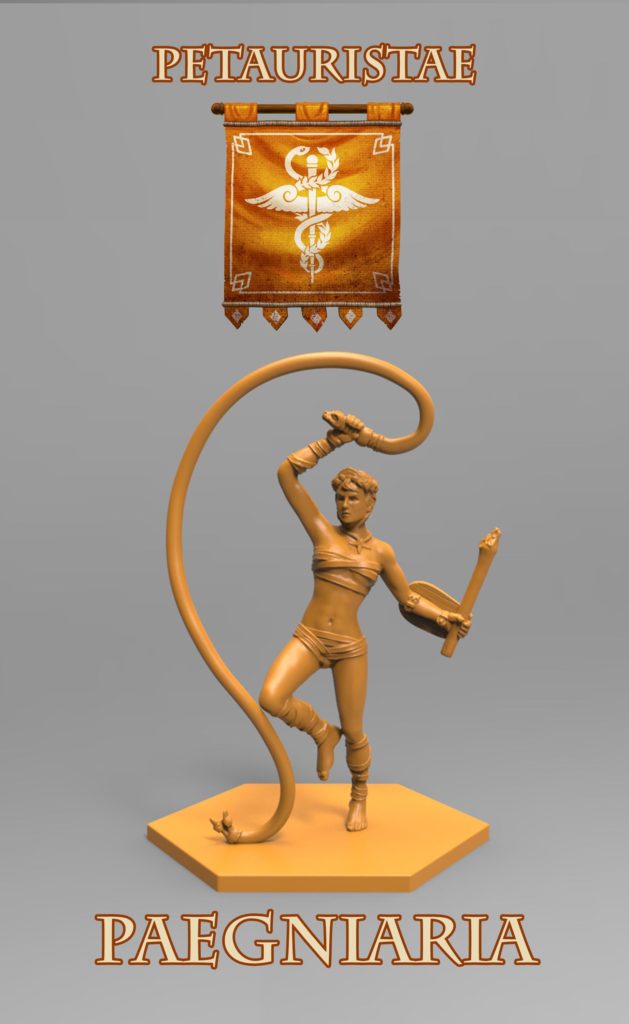
At Level II, the Paegniaria has a special defense, Tumbling (+1 Block, +4 Stand Up), that she uses to easily avoid being Knocked Down. Her special skill Whipping allows her to attack any enemy on a 3-hex radius, preventing counterattacks (even if every Fumble cancels a Success); only the blue Laquearius is able to reach that long. As her team-mate, the Desultor, she cannot be trained to Level III.
Excerpt from the glossary of GLADIATORIS, checked by Alfonso Mañas.
Design process
(HistorY of a hairstYle)
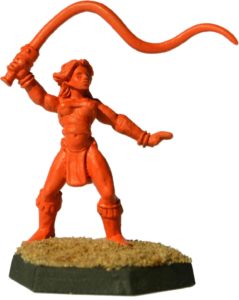 Back in May, 2014, we introduced the Paegniaria (a.k.a. “Leda”) in the old blog. The next month, we published two drawings made by my daughters (6 years old at that moment) and both of them drew her with two whips.
Back in May, 2014, we introduced the Paegniaria (a.k.a. “Leda”) in the old blog. The next month, we published two drawings made by my daughters (6 years old at that moment) and both of them drew her with two whips.
That idea stuck (JDKaos and me insisted on it) and I wanted to draw her this way for the miniature (“as long as she doesn’t look like a Witch Elf or a Dominatrix”)…
[slideshow_deploy id=’2189′]
I only needed our historian’s, Alfonso Mañas, seal of approval…
David Temprano.
Alfonso: “Remember: All the visual representations of the paegniarii that we know of carry a whip in their right hand and a stick in the left (or a stick in both of them).
Also, the hairstyle: The ponytail that you draw on your sketch is not documented for Roman women.”
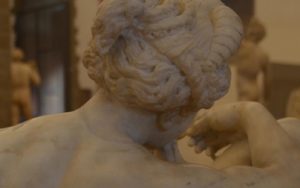 I proposed a new, intermediate hairstyle, inspired by the Ammannati’s Leda with the Swan statue (Museo Nazionale de Bargello), inspired in turn by a Michelangelo lost work.
I proposed a new, intermediate hairstyle, inspired by the Ammannati’s Leda with the Swan statue (Museo Nazionale de Bargello), inspired in turn by a Michelangelo lost work.
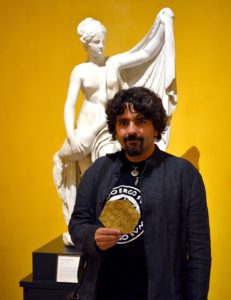 But it wasn’t accepted either, being from the XVIth century. We thought about other examples, like the J. Paul Getty Museum’s own Leda and the Swan, from the first century A.D., and we discussed about the correctness of the classical interpretation in Clodion’s Offering to Priapus, also in the Getty Museum, with a similar hairstyle to the Louvre’s Three Graces, a Roman copy from the imperial period.
But it wasn’t accepted either, being from the XVIth century. We thought about other examples, like the J. Paul Getty Museum’s own Leda and the Swan, from the first century A.D., and we discussed about the correctness of the classical interpretation in Clodion’s Offering to Priapus, also in the Getty Museum, with a similar hairstyle to the Louvre’s Three Graces, a Roman copy from the imperial period.
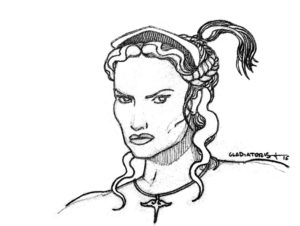 Alfonso: “In fact, that hairstyle (The Three Graces’ one) is a Greek one, probably from around IVth century b.C., the original’s date of production. So it’s unlikely that Roman women from that time wore it, moreso Roman women some centuries later (and that’s when Gladiatoris is set), and of course, lower-class women such as those appearing on the Arena were not likely at all to wear it.
Alfonso: “In fact, that hairstyle (The Three Graces’ one) is a Greek one, probably from around IVth century b.C., the original’s date of production. So it’s unlikely that Roman women from that time wore it, moreso Roman women some centuries later (and that’s when Gladiatoris is set), and of course, lower-class women such as those appearing on the Arena were not likely at all to wear it.
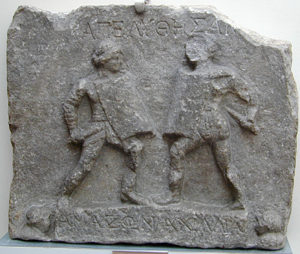 The more rigorous approach is to make her wear the only hairstyle appearing in sources showing women taking part in the Arena spectacles; that is, the hairstyle of the gladiatrices from Ephesus and Hamburg: the braid around the head.”
The more rigorous approach is to make her wear the only hairstyle appearing in sources showing women taking part in the Arena spectacles; that is, the hairstyle of the gladiatrices from Ephesus and Hamburg: the braid around the head.”
 …In fact, Alfonso Mañas himself had identified just some years before the statue from the Hamburg’s Museum für Kunst Und Gewerbein as a Thracian victorious gladiatrix, armed with a sica.
…In fact, Alfonso Mañas himself had identified just some years before the statue from the Hamburg’s Museum für Kunst Und Gewerbein as a Thracian victorious gladiatrix, armed with a sica.
Definitely the braid around the head looked like the best option here.
http://redhistoria.com/estatua-de-una-mujer-gladiadora/#.V9Ax0RTVlkg
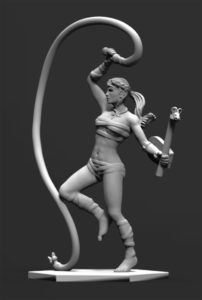 After agreeing to a graceful stance, appropriate to her abilities in the game, we detailed the first 3D model… but the sculptors surprised us!
After agreeing to a graceful stance, appropriate to her abilities in the game, we detailed the first 3D model… but the sculptors surprised us!
David: “You have added the ponytail that I had finally agreed with Alfonso to eliminate (or, at the most, to be very short). Also, the ribbon goes under the braids, but those braids circling the head, have to gather up all hair, not only the fringe (the first ribbon works as a diadem, as in the references).”
We were really obsessed over that hairstyle!
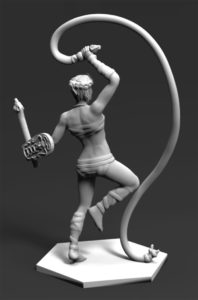 Those corrections were approved by Alfonso… Settled at last! That discussion only took three weeks… 😀
Those corrections were approved by Alfonso… Settled at last! That discussion only took three weeks… 😀
We also changed her stick to make it different from an Egyptian scepter (any religious implication would be out of place in the ludi from the imperial period), and we added some grain to the wood. The carving represents a lycaon, the orange team’s small Beast.
Finally, we carved a serpent’s head on the whip’s handle, and a bifid viper tail, as the serpent appears in the Acrobats’ banner (a combination of the caduceus and the rod of Asclepius). Miniature finished!
[slideshow_deploy id=’1582′]

